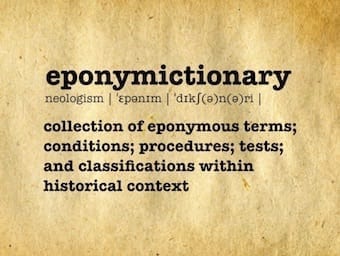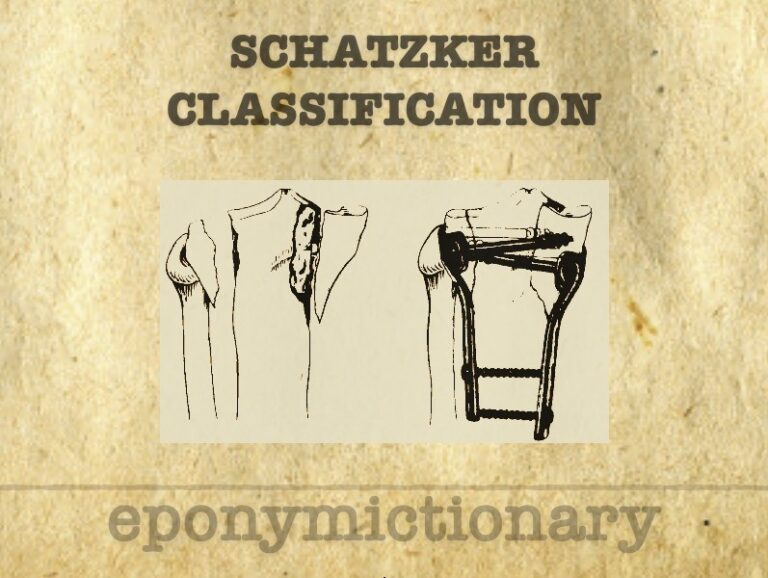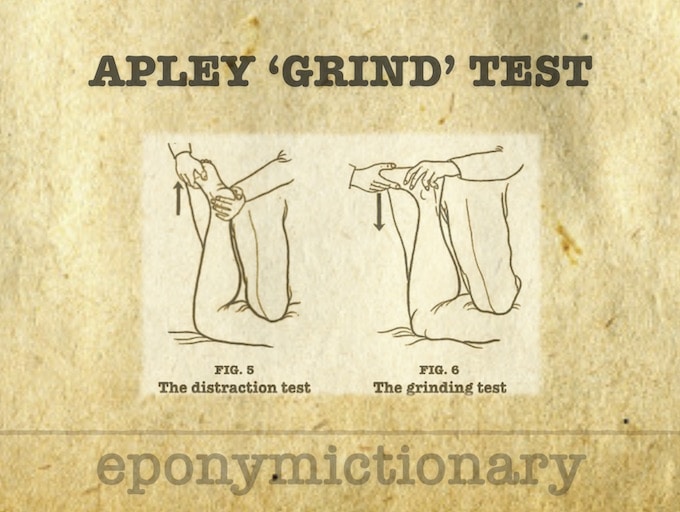
Pott fracture
Archaic eponym: Effectively a fracture-dislocation of the ankle, involving a fracture of the fibula, disruption of the deltoid ligaments with an intact tibiofibular ligament

Archaic eponym: Effectively a fracture-dislocation of the ankle, involving a fracture of the fibula, disruption of the deltoid ligaments with an intact tibiofibular ligament

Bosworth fracture-dislocation of the ankle. Rare injury with proximal fibular fragment trapped behind the tibia, frequently irreducible by closed methods.

The Schatzker classification system divides tibial plateau fractures into six types. First described 1979 by Canadian surgeon Joseph Schatzker

Salter-Harris classification of fractures describes injuries involving the epiphyseal plate of any bone. Described by Salter and Harris (Canada, 1963)

Apley Grind test (Apley Compression test) is a maneuver that is performed to evaluate for meniscus injury. 1947 by Alan Graham Apley (1914 - 1996)
Whipple procedure: Radical pancreatoduodenectomy for cancer of pancreas. Originally Codivilla (1898), then Kausch (1907) and Whipple (1934)
Henoch-Schonlein Purpura (HSP) or IgA Vasculitis, is the most common childhood vasculitis. There is a tetrad of the core clinical manifestations

Hypodermic needle (needle which enters the skin) Originally described in 1946 by Ralph Huber. More commonly known as the Tuohy Needle

Fox–Fordyce disease: A chronic itchy papular condition occurring in areas of the skin with apocrine glands especially the axilla of young women.

Katz-Wachtel phenomenon: Large biphasic QRS complexes (tall R waves + deep S waves) in V2-5. First described by Louis Nelson Katz in 1937

Description Biot respiration History 1876 – Biot studied patients with Cheyne–Stokes respiration at l’Hôtel-Dieu de Paris. In a 16-year old male with tuberculous meningitis he observed a previously undescribed pattern of breathing which he termed ‘rhythme meningitique‘. He found the…

The Trendelenburg position is credited to german surgeon Friedrich Trendelenburg, who created the position to improve surgical exposure of the pelvic organs during operations.The Trendelenburg position involves placing the patients head down, and elevating the feet.